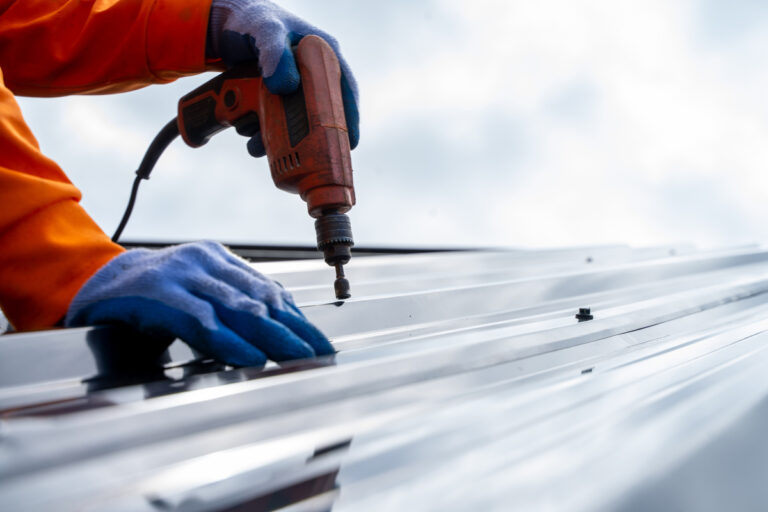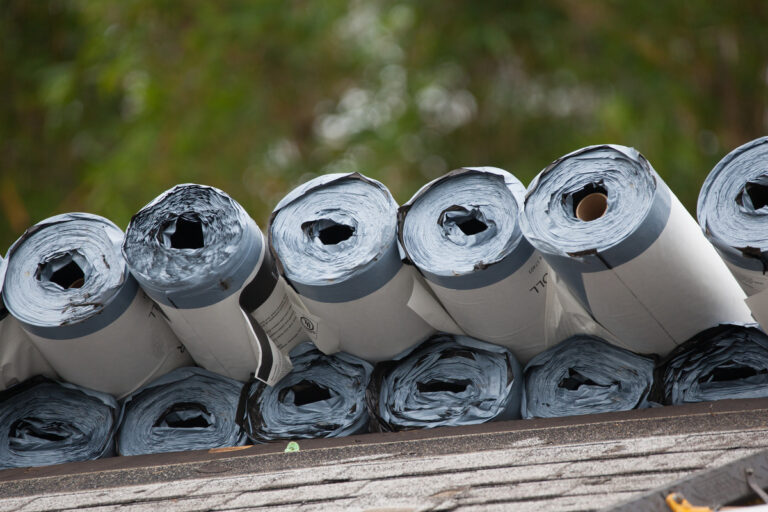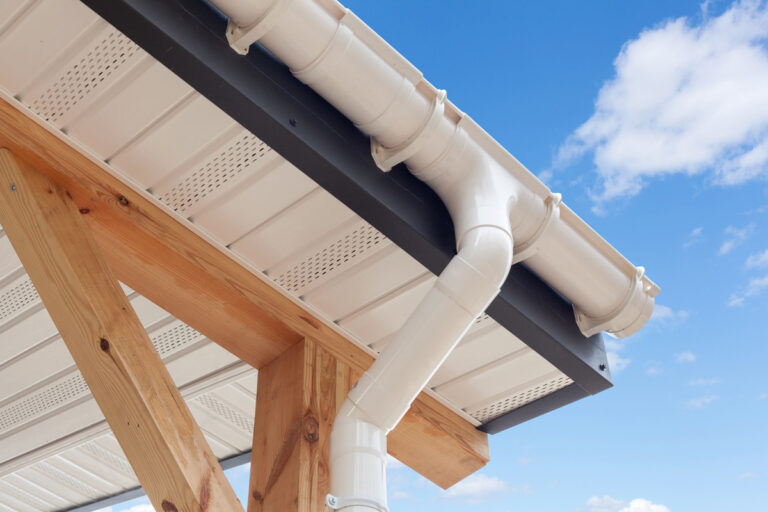Shingle Granule Loss: What to Look for & What to Do
March 8, 2023
Shingle granule loss is a common problem for homeowners and can have severe consequences if left unaddressed. But what exactly does granular loss look like? And how do you prevent it from happening in the first place or repair it once it has already occurred?
Let’s go over how to repair and maintain your roof when you notice shingle granule loss and other mishaps.
Spotting the signs and understanding what to do next are vital to preserving your roof’s stability. This guide will teach you everything you need about mineral granule loss, from what causes shed shingle granules to tips for avoiding a whole roof replacement.
What is Asphalt Shingle, Granule Loss?
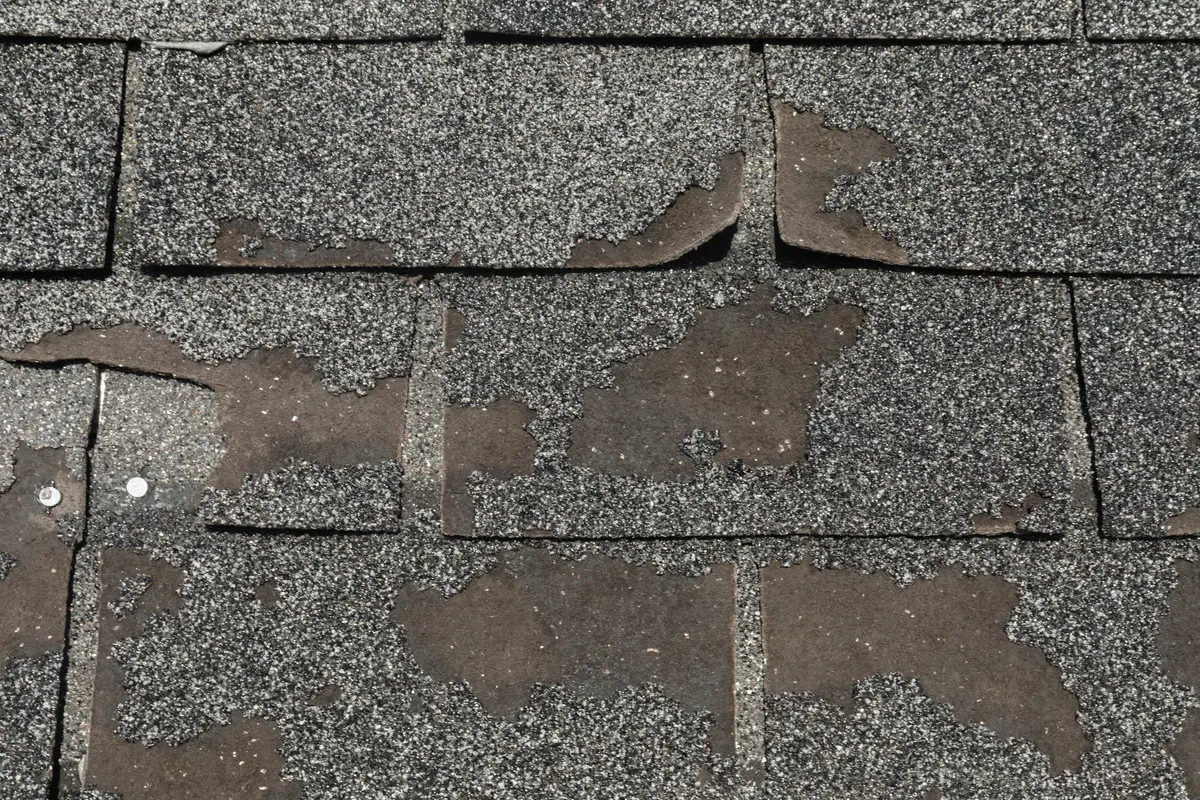
Asphalt shingle granule loss is when shingle roofing materials slowly lose their colored granules. The mineral granules are embedded in the asphalt and fine mineral fillers, providing an extra layer of protection against UV rays and water damage.
As asphalt shingles age, they are more prone to wind uplifting and other natural disasters, which can cause them to deteriorate more quickly and thus lose their protective layers of granules.
Granule loss generally means that your roof material is wearing out or becoming damaged and should be replaced immediately for optimal performance. If you’re ready to replace your roof, make sure to obtain multiple quotes from licensed roofing companies in your area with good reviews.
Signs of Asphalt Shingle Granule Loss
Careful observation reveals visible granular loss on your shingle roof. These signs include:
Visible Granules on the Ground
After rainfall or snowfall, homeowners may notice visible scattered shingle granules on the ground around their homes. This is a sign of asphalt shingle deterioration. Be aware of this process and how to combat it for optimal roof maintenance.
Bald Spots on Roof
An indicator of trouble with your asphalt shingles may be patches of exposed surfaces without the characteristic granules. These bald areas often result from persistent wind, hail, or other weather patterns which pull the granules away over time.
Curling & Bubbling Shingles
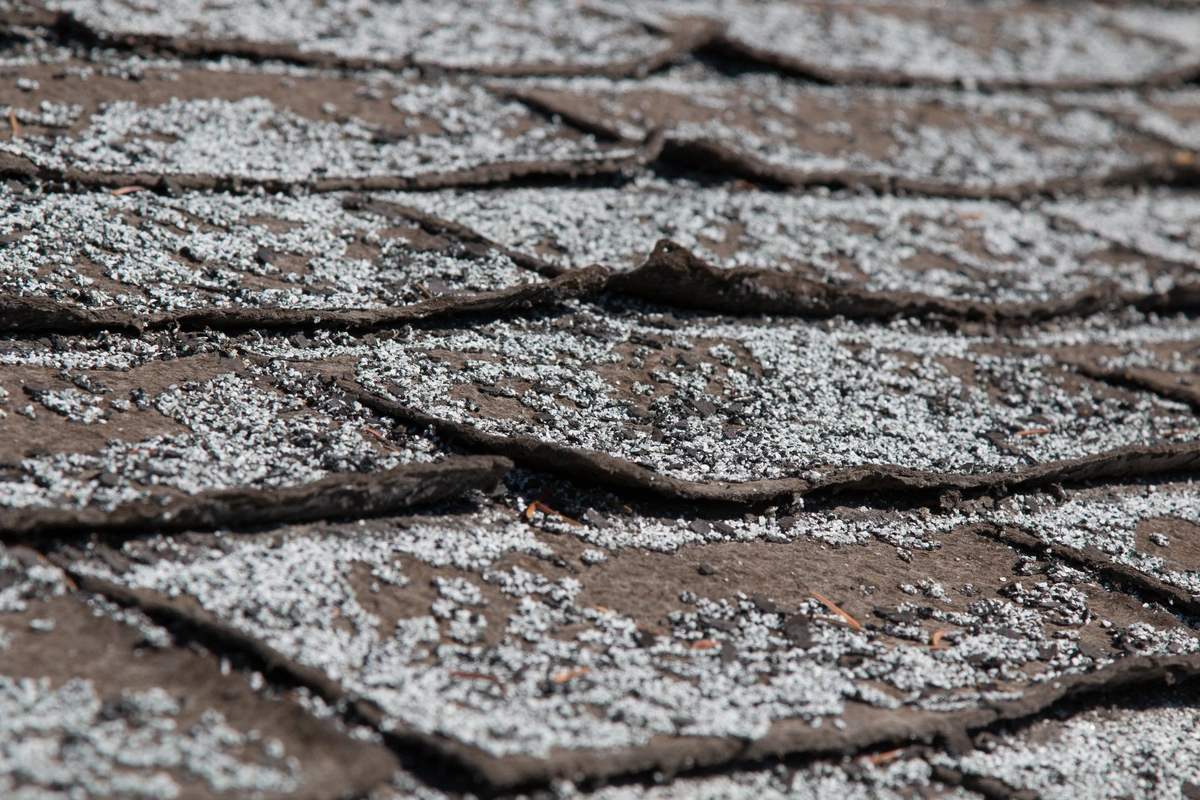
Should you identify any edge curls in your shingles, this could be indicative of a breakdown through excessive ultraviolet exposure or poor installation. On the other hand, this is a sure sign of asphalt shingle loss resulting from constant exposure to heat, moisture, and wind.
Monitoring for such curling should provide you with an invaluable guide as to whether proactive steps need to be taken to maintain the integrity of such highly vulnerable components.
Discoloration on Roof
Asphalt shingles may exhibit discoloration, suggesting a loss of the vital granule coating. Alternatively, this could indicate a prematurely defective material not intended to provide a durable covering solution.
Nonuniform Color Pattern
From a distance, asphalt shingles should appear uniform in color. An uneven pattern, however, may indicate an issue with granule loss and warrant further investigation. Prompt repairs can help restore the roof’s protection against the elements – sun, rain, and more.
Why Are My Roof Shingles Losing Granules?
Asphalt shingle granule loss is typically the result of the following:
Extreme Weather and Storm Damage
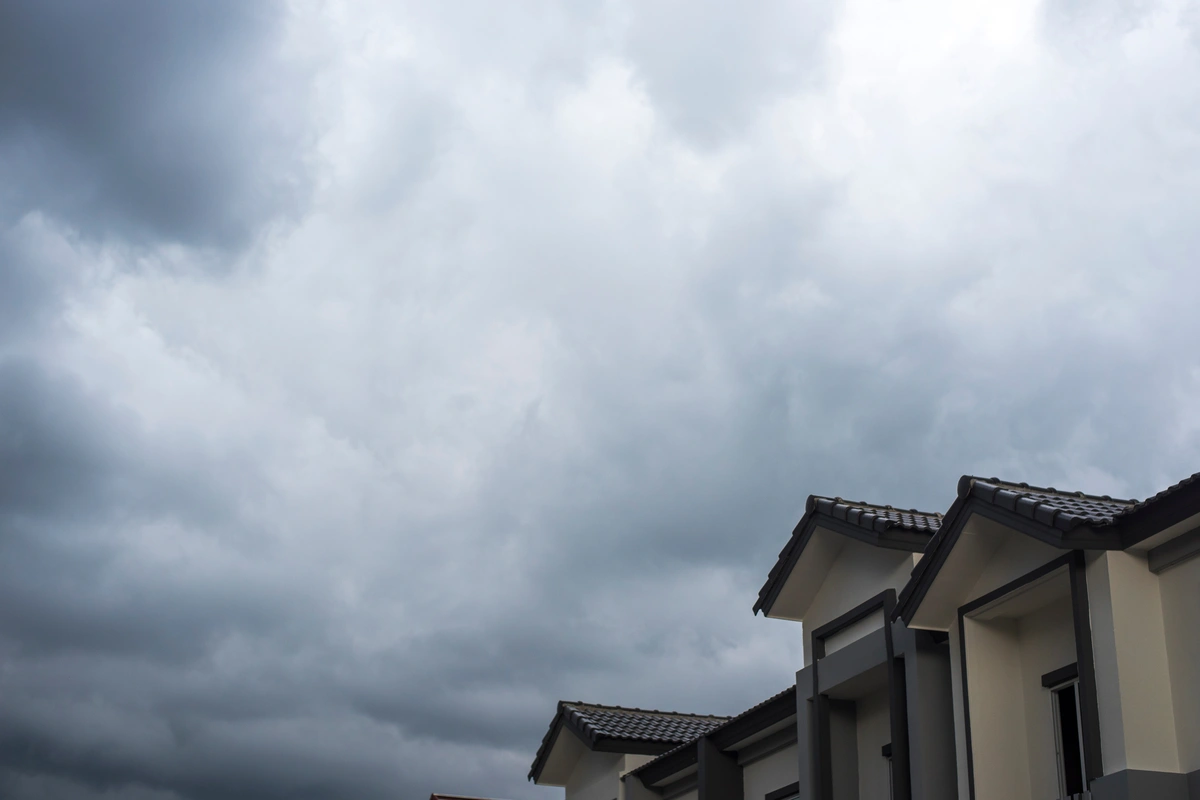
Asphalt shingles are designed to withstand everyday wear and tear and minor weather events like rain or snow. However, severe storms with high winds can cause the granules on asphalt shingles to come loose and be blown away.
Impact Damage from Branches, Hail Storms, etc
Harsh weather can also cause damage to asphalt shingles resulting in granule loss. For example, impacts from branches or large debris flying through the air during a storm can cause minor chips.
This can dislodge the tiny bits of stone used in asphalt roofing lookers. Additionally, hail storms can damage roofing materials resulting in granules being lost during repair procedures.
Aging & Normal Wear on Older Roofs
As time passes, asphalt shingle roofs degrade due to constant exposure to elements such as UV radiation or weather conditions. This degradation gradually loosens the adhesive bond between asphalt shingle tabs and the material they’re attached to, resulting in granular pieces coming off during windy days.
Improper Installation
One of the less common causes for roof granular loss is improper installation procedures at construction sites where roofers must adequately follow installation safety guidelines.
What to Do When Your Roof is Losing Granules

Loss of granules isn’t unique to you – it happens to the best of us! Fortunately, you can take some simple steps today to help prevent further harm.
Contact Your Roof Manufacturer
If you notice granules accumulating in your gutters or on the ground beneath your roof, it’s essential to contact the manufacturer of your roof right away. The manufacturer can advise why this is happening and what can be done about it.
Check for Damage from Storms or High Winds
Storm damage or high winds can cause granules to become loose and fall off a shingled roof. In this case, you’ll need to inspect your roof more closely for any other signs of severe weather-related damage, such as curled shingles or torn ones.
If there appears to be extensive damage, call a professional roofer to assess the situation before attempting any repairs yourself.
Fix Any Broken Sealants Around Flashings and Vents
Aging sealants around flashings and vents can sometimes break down, allowing granules to come off with the water when it rains. Check all sealing material regularly and fix any broken sealants promptly so rainwater runoff does not release granules into the environment.
This will also help reduce leaks caused by failed seals on your property’s exterior surfaces.
Clean Out Gutters Regularly
Another way to keep extra granules from washing away during rain storms is by cleaning out clogged gutters twice yearly (once during spring and then again in fall). This will prevent debris from consolidating inside the channel, which could form an obstruction that disallows proper drainage of water from the asphalt shingle roof surface.
Conclusion
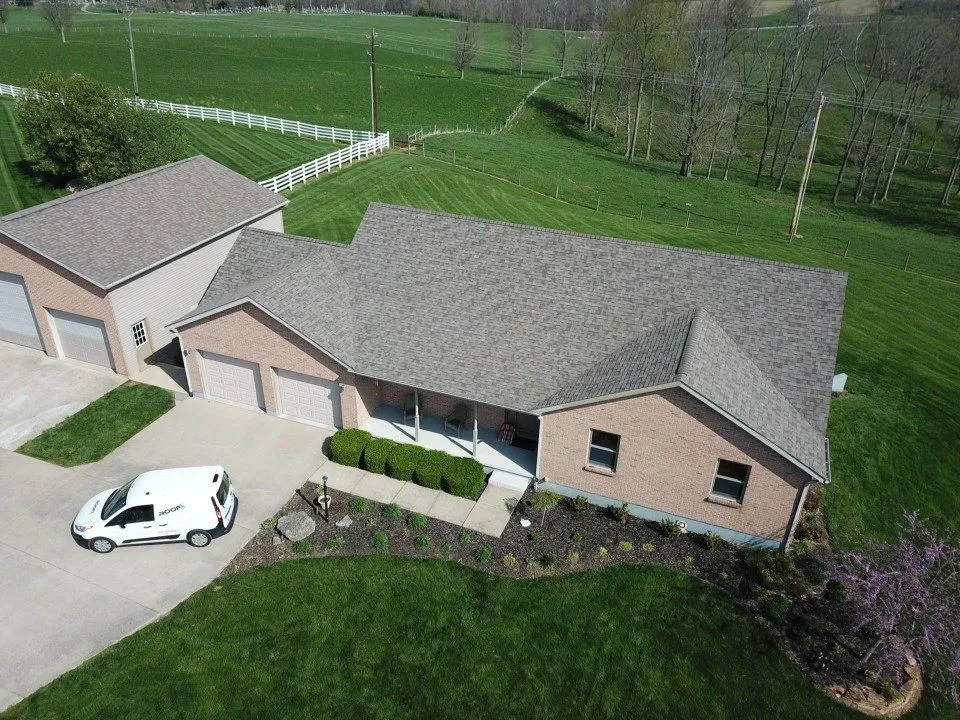
Taking steps to repair existing roof damage and prevent more granules from dislodging can help keep your roof in great shape for a long time, letting you avoid the cost and stress of new construction.
Got shingles busted with granule loss? Reach out to Roof X – we’re pros at reviving your roof’s vigor and returning it to its glory. Let’s turn those broken slates into bright smiles.

